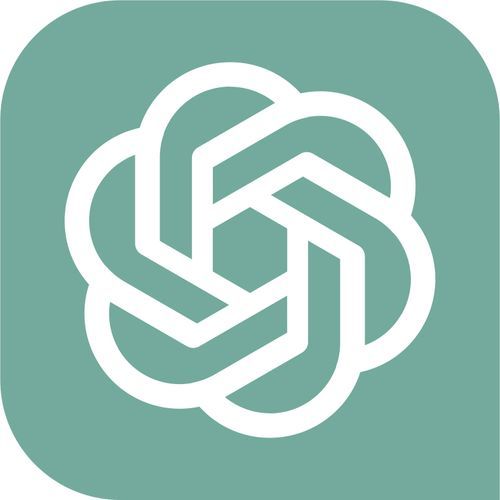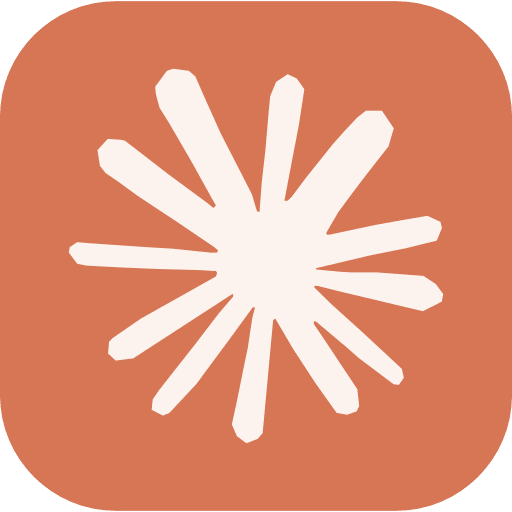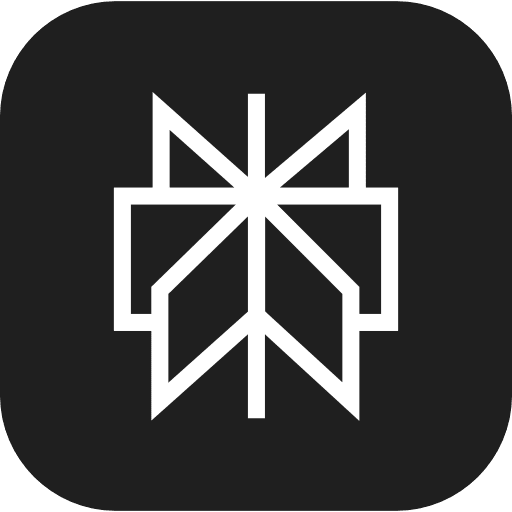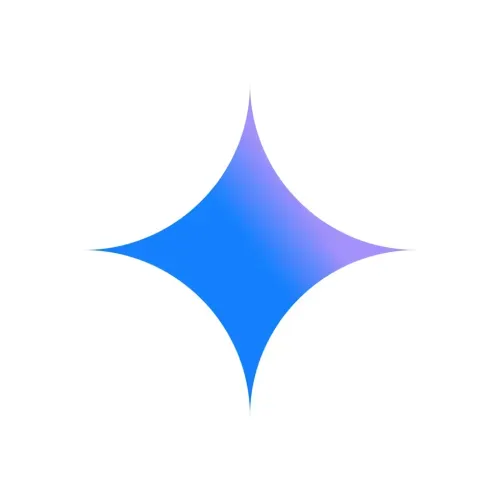Library of teambuilding games & icebreakers


Defy gravity
For this game each player needs two balloons. Using only one hand, each player tries to keep them both from touching the ground for a whole minute. If you want more of a challenge, increase the amount of balloons to three per player. No holding onto the balloons! Tip: Use different colored balloons so you can better keep track of which have touched the ground.
Defy gravity
How to play Defy gravity
For this game each player needs two balloons. Using only one hand, each player tries to keep them both from touching the ground for a whole minute. If you want more of a challenge, increase the amount of balloons to three per player. No holding onto the balloons! Tip: Use different colored balloons so you can better keep track of which have touched the ground.
Gallery



Video


DIY Disc Golf
Disc golf is a sport where you sling flying discs (AKA Frisbees) at special targets made of metal chains and buckets. Like golf, the idea is to get your disc in the target in the fewest possible throws.When it comes to Field Day games for adults, disc golf is awesome. But unless you have an actual disc golf course on-site, you’ll want to do things the “DIY way.” Create your own course by making targets out of big buckets of water (washing baskets also work) and placing them at different points around a playing field. You can then proceed around it, taking turns throwing Frisbees at the targets.The goal? Get your Frisbee in the bucket with as few throws as possible! Each throw represents a “stroke.” Keep track of how many strokes it takes to hit each target, and then add them up at the end. The lowest score wins.
DIY Disc Golf
How to play DIY Disc Golf
Disc golf is a sport where you sling flying discs (AKA Frisbees) at special targets made of metal chains and buckets. Like golf, the idea is to get your disc in the target in the fewest possible throws.
When it comes to Field Day games for adults, disc golf is awesome. But unless you have an actual disc golf course on-site, you’ll want to do things the “DIY way.” Create your own course by making targets out of big buckets of water (washing baskets also work) and placing them at different points around a playing field. You can then proceed around it, taking turns throwing Frisbees at the targets.
The goal? Get your Frisbee in the bucket with as few throws as possible! Each throw represents a “stroke.” Keep track of how many strokes it takes to hit each target, and then add them up at the end. The lowest score wins.
Gallery



Video


Coordinated Rube Goldberg machine
Teams build different sections of a complicated Rube Goldberg machine. In-office teams work on physical pieces, and remote workers create virtual sections using online tools.In-office workers can start by building something physical—like a series of dominoes or a ball rolling down a ramp—while remote workers come up with digital elements (animations or recorded videos of their contraptions). The challenge is to connect these sections into one long, wacky machine that works seamlessly together. Remote workers can submit their videos or ideas, and in-office teammates figure out how to physically incorporate them. This brings remote and office workers together in a super creative way!
Coordinated Rube Goldberg machine
Explanation:
Teams build different sections of a complicated Rube Goldberg machine. In-office teams work on physical pieces, and remote workers create virtual sections using online tools.
In-office workers can start by building something physical—like a series of dominoes or a ball rolling down a ramp—while remote workers come up with digital elements (animations or recorded videos of their contraptions). The challenge is to connect these sections into one long, wacky machine that works seamlessly together. Remote workers can submit their videos or ideas, and in-office teammates figure out how to physically incorporate them.
This brings remote and office workers together in a super creative way!
Gallery



Video


Online office debates
Regardless of how cohesive your team is, at some point, you’re going to encounter disagreements. Online office debates are a playful way of developing public speaking, communication and listening skills that will come in useful during real-life debates.To organise an online office debate, select two people to go head-to-head in a meaningless debate. The topic could be silly, such as “No one should ever tell a lie” or “Pineapple belongs on pizza.” One person argues “for” the topic while the other argues “against.”
Online office debates
Regardless of how cohesive your team is, at some point, you’re going to encounter disagreements. Online office debates are a playful way of developing public speaking, communication and listening skills that will come in useful during real-life debates.
How to play Online office debates
To organise an online office debate, select two people to go head-to-head in a meaningless debate. The topic could be silly, such as “No one should ever tell a lie” or “Pineapple belongs on pizza.” One person argues “for” the topic while the other argues “against.”
The two presenters can argue their case using any means necessary, they might want to create a PowerPoint presentation and share their screen or back up their points with YouTube videos. After the presentations have been delivered, it’s time for the audience to decide the winner.
Gallery



Video


Safety memory match
Create a set of cards with safety-related images or terms and their corresponding definitions or explanations. Lay the cards face down and have employees take turns flipping two cards to find matches. The player with the most matches wins.A safety memory match game is a fun and engaging way to reinforce safety concepts and terminology. It improves memory and recall while adding a playful element to learning. A simple game that can be enjoyed by everyone, making it a great addition to training sessions.
Safety memory match
How to play:
Create a set of cards with safety-related images or terms and their corresponding definitions or explanations. Lay the cards face down and have employees take turns flipping two cards to find matches. The player with the most matches wins.
A safety memory match game is a fun and engaging way to reinforce safety concepts and terminology. It improves memory and recall while adding a playful element to learning. A simple game that can be enjoyed by everyone, making it a great addition to training sessions.
Gallery



Video


Posture obstacle course
If you have a space that is good for moving around, such as an open concept office, you can give this one a try. Use various furnishings or furniture to create a short obstacle course that everyone must go through in one minute. The catch? They need to balance a book on their head to ensure “proper posture”. If the book falls off they must start over. Have everyone go, one at a time, setting a minute timer for each instance.
Posture obstacle course
How to play Posture obstacle course
If you have a space that is good for moving around, such as an open concept office, you can give this one a try. Use various furnishings or furniture to create a short obstacle course that everyone must go through in one minute. The catch? They need to balance a book on their head to ensure “proper posture”. If the book falls off they must start over. Have everyone go, one at a time, setting a minute timer for each instance.
Gallery



Video


Instant win games
Instant gratification is a powerful motivator for most people. If you want people to buy more of your product, try putting together a game where they can find out if they won or lost immediately. For example, having people scratch to win, spin a wheel, or pull a lever on a slot machine are all simple actions that could result in an exciting prize for your customers. It can be as simple as a retail store putting together a wheel to spin that has various prizes or discounts attached, and asking each customer if they want to give it a whirl. If you put it near the front of your store, you may be surprised how many people stop in. Make sure to promote it (and the winners) on social media for even more traction.
Instant win games
How to play Instant win games
Instant gratification is a powerful motivator for most people. If you want people to buy more of your product, try putting together a game where they can find out if they won or lost immediately. For example, having people scratch to win, spin a wheel, or pull a lever on a slot machine are all simple actions that could result in an exciting prize for your customers.
It can be as simple as a retail store putting together a wheel to spin that has various prizes or discounts attached, and asking each customer if they want to give it a whirl. If you put it near the front of your store, you may be surprised how many people stop in. Make sure to promote it (and the winners) on social media for even more traction.
Gallery



Video


Human machine
Effective collaboration is an important part of a well-functioning team. This training game is a great way to encourage strong cooperation. Have everyone stand in a circle with one person in the middle. They should mimic part of a “machine” by making appropriate sounds or motions. After 5 seconds, another person should enter and connect to the first person, also making the right “machine” sounds and motions. Every 5 seconds a new person joins, until everyone is connected as a well-running machine. This game is also good if you’re looking for some physical activity to break up a long day, or a quick office game.
Human machine
How to play Human machine
Effective collaboration is an important part of a well-functioning team. This training game is a great way to encourage strong cooperation. Have everyone stand in a circle with one person in the middle. They should mimic part of a “machine” by making appropriate sounds or motions.
After 5 seconds, another person should enter and connect to the first person, also making the right “machine” sounds and motions. Every 5 seconds a new person joins, until everyone is connected as a well-running machine. This game is also good if you’re looking for some physical activity to break up a long day, or a quick office game.
Gallery



Video


Interdepartmental pitch battles
For this hybrid version, teams can collaborate online through virtual meeting platforms like Zoom or Microsoft Teams, while those in the office can meet physically or join virtually. Remote team members can contribute their ideas via shared documents or collaboration tools like Miro or Slack. Each team presents their pitch live via video call, with remote judges participating online and in-office judges scoring live. The presentations can be recorded so that all participants can watch each team's ideas, ensuring everyone stays engaged.
Interdepartmental pitch battles
How to play Interdepartmental pitch battles
For this hybrid version, teams can collaborate online through virtual meeting platforms like Zoom or Microsoft Teams, while those in the office can meet physically or join virtually. Remote team members can contribute their ideas via shared documents or collaboration tools like Miro or Slack. Each team presents their pitch live via video call, with remote judges participating online and in-office judges scoring live. The presentations can be recorded so that all participants can watch each team's ideas, ensuring everyone stays engaged.
Gallery



Video


Time capsule creation
Teams work together to create a time capsule that captures the personality and vibe of your office. Each department adds a fun item, memory, or note that reflects their unique style.In this hybrid version, in-office workers can physically contribute items, like quirky gadgets, notes, or office mementos, while remote workers can submit their contributions digitally, like a fun video, a favorite meme, or a virtual memory of a great team moment. The digital items can be printed or stored on a USB drive to be included in the capsule. Once everything is ready, the capsule is sealed up and stored away to be opened in the future. It’s a fun way to bond and celebrate the unique quirks of both in-office and remote team members, all in one cool time capsule.
Time capsule creation
Explanation:
Teams work together to create a time capsule that captures the personality and vibe of your office. Each department adds a fun item, memory, or note that reflects their unique style.
In this hybrid version, in-office workers can physically contribute items, like quirky gadgets, notes, or office mementos, while remote workers can submit their contributions digitally, like a fun video, a favorite meme, or a virtual memory of a great team moment. The digital items can be printed or stored on a USB drive to be included in the capsule. Once everything is ready, the capsule is sealed up and stored away to be opened in the future. It’s a fun way to bond and celebrate the unique quirks of both in-office and remote team members, all in one cool time capsule.
Gallery



Video


Snowball fight
This activity is pretty simple and straightforward. If you live in a climate where snow is on the ground, get outside and dig in! Organize your larger group into smaller teams and have an old-fashioned snowball fight outdoors. For maximum fun, you can set up barriers or partitions in advance for people to hide behind, or set out supplies for building a “fort” for protection.
Snowball fight
How to play Snowball fight
This activity is pretty simple and straightforward. If you live in a climate where snow is on the ground, get outside and dig in! Organize your larger group into smaller teams and have an old-fashioned snowball fight outdoors. For maximum fun, you can set up barriers or partitions in advance for people to hide behind, or set out supplies for building a “fort” for protection.
Gallery



Video


Stop-Walk
Looking for a quick team-building activity to refine your group‘s listening skills before a meeting? Then Stop-Walk is the game for you!
Stop-Walk
Looking for a quick team-building activity to refine your group‘s listening skills before a meeting? Then Stop-Walk is the game for you!
Great for: Listening skills
Duration: 10 minutes
Players: 8+
You’ll need: Nothing
How to play Stop-Walk
Setup: Find a large room and delegate one person to be the “leader.”
To play: The game starts simply. The leader introduces two basic instructions: “stop” and “walk.” When the leader says “walk,” everybody starts walking around, and when he/she says “stop,” everybody stops. Then, the leader announces that the meanings of these phrases have now been reversed, so “stop” means “walk” and “walk” now means “stop.” Once the group has got to grips with these commands, the leader can slowly introduce new pairs of commands such as “clap” and “jump,” now and again reversing the meanings. Whenever somebody performs the wrong action, they are eliminated from the game.
Gallery



Video


Bucket list sharing
Don’t let daily drudgery drain your big dreams. As a leader, you can help encourage your entire team to keep sight of those bigger life goals. Start your next event or meeting by asking everyone to share one of the items from their bucket list, with a brief explanation of why. You can encourage dialogue by asking if they think they’ll ever accomplish that goal, or how they might go about it. This is a great way to learn about what the people you work with really value and what matters to them outside of work.
Bucket list sharing
How to play Bucket list sharing
Don’t let daily drudgery drain your big dreams. As a leader, you can help encourage your entire team to keep sight of those bigger life goals. Start your next event or meeting by asking everyone to share one of the items from their bucket list, with a brief explanation of why. You can encourage dialogue by asking if they think they’ll ever accomplish that goal, or how they might go about it. This is a great way to learn about what the people you work with really value and what matters to them outside of work.
Gallery



Video


Remote sketch-off
Get your virtual whiteboards ready for remote sketch-off! One player describes an object in detail, and everyone else has to draw it based solely on the description—no peeking. The results? Often hilarious.It’s a great way to have some fun, practice communication, and see who’s got the best artistic (or interpretive) skills.
Remote sketch-off
Get your virtual whiteboards ready for remote sketch-off! One player describes an object in detail, and everyone else has to draw it based solely on the description—no peeking. The results? Often hilarious.
It’s a great way to have some fun, practice communication, and see who’s got the best artistic (or interpretive) skills.
How to play:
- One person describes an object, step by step.
- Everyone else draws it on an online whiteboard.
- Compare drawings for some laughs and see who got closest to the real thing!
Gallery



Video


Puzzle bonanza
Provide teams with a variety of puzzles, such as jigsaw puzzles, riddles, or brain teasers. Once they finish one puzzle, they progress to the next. The team who can finish the quickest is the winner.
Puzzle bonanza
How to play:
Provide teams with a variety of puzzles, such as jigsaw puzzles, riddles, or brain teasers. Once they finish one puzzle, they progress to the next. The team who can finish the quickest is the winner.
Materials needed: Assorted puzzles
Benefits:
- Stimulated out-of-the-box thinking: Say goodbye to ordinary solutions! This game pushes your team members to think outside the puzzle box and explore unconventional approaches. Witness a creativity explosion as they discover innovative perspectives and solutions.
- Fostered collaborative triumphs: Witness the power of teamwork as your employees join forces to conquer challenging puzzles. It's like a symphony of puzzle-solving brilliance, with each team member adding their unique piece to complete the magnificent masterpiece. Collaboration never felt so victorious!
Gallery



Video


Twenty Questions Game
By challenging your team to guess the answer to a secret question in under 20 inquiries, you'll encourage communication, collaboration, and strategic thinking. Plus, it's a great way to sneak in some team building without resorting to trust falls or awkward trust exercises.
Twenty Questions Game
By challenging your team to guess the answer to a secret question in under 20 inquiries, you'll encourage communication, collaboration, and strategic thinking. Plus, it's a great way to sneak in some team building without resorting to trust falls or awkward trust exercises.
How to play:
- Think of an object, person, or place.
- The other player(s) will have 20 questions to ask about your chosen item.
- They can only ask yes or no questions.
- After each question, you can only respond with yes, no, sometimes, or I don't know.
- The players must try to guess what the object is before they run out of their allotted 20 questions.
- If they successfully guess the object, they win.
- If they run out of questions before they guess correctly, the player who chose the object wins.
- If the game ends in a tie, you can play again to break the tie.
To supercharge the fun, try to set a theme for the game to boost the fun factor and creativity, while also allowing employees to learn more about each other. Make sure to check out our other question based games if this tickled your fancy!
Gallery



Video


Role reversal game
This game is all about understanding conflicts from different perspectives. We're going to act out conflict scenarios and then swap roles to see how the other side feels. It's like stepping into someone else's shoes, but without the actual shoe-swapping part! It's a great way to build empathy and gain fresh insights on how to overcome teamwork challenges in the workplace. Get ready to embrace different perspectives!
Role reversal game
How to play Role reversal
This game is all about understanding conflicts from different perspectives. We're going to act out conflict scenarios and then swap roles to see how the other side feels. It's like stepping into someone else's shoes, but without the actual shoe-swapping part! It's a great way to build empathy and gain fresh insights on how to overcome teamwork challenges in the workplace. Get ready to embrace different perspectives!
Gallery



Video


Who Said It?
For this game, you’ll need to have several quotes from famous individuals prepared. Start by giving everyone a quote and challenging them to guess who said it. Whoever submits the first correct answer wins. It’s easiest to have pieces of paper with the quotes printed on them, that you can just hand out as people enter the room.
Who Said It?
How to play Who Said It?
For this game, you’ll need to have several quotes from famous individuals prepared. Start by giving everyone a quote and challenging them to guess who said it. Whoever submits the first correct answer wins. It’s easiest to have pieces of paper with the quotes printed on them, that you can just hand out as people enter the room.
Gallery



Video


Quick Fire-Debate
Choose thought-provoking topics or issues and divide the team into two groups: one supporting the topic and the other opposing it. Engage in a lively 1 minute debate where participants use their creativity and persuasive skills to make their case. Choose a judge to pick a winner.
Quick Fire-Debate
How to play:
Choose thought-provoking topics or issues and divide the team into two groups: one supporting the topic and the other opposing it. Engage in a lively 1 minute debate where participants use their creativity and persuasive skills to make their case. Choose a judge to pick a winner.
Example: a poor person stealing food to feed their family.
Materials needed: None
Benefits:
- Critical thinking champions: Sharpen your team's critical thinking skills as they analyze and present arguments with a creative twist. This game is your intellectual battleground, where creativity becomes your secret weapon.
- Confidence boosters: Embrace the art of persuasive communication and witness your employees' confidence soar as they present their arguments with flair and creativity. It's like a TED Talk where your team members become eloquent speakers with powerful messages.
Gallery



Video


Pin the tail on…
Return to your childhood birthday with a “pin the tail on” game. You can buy a set from a party store or online, or you can make up your own game with your own visuals. Some people print a large photo of a coworker and have that as the game piece. For example, if your boss always drinks Diet Coke, maybe you have a life-size image of her and participants should try to pin the beverage into her hand. As a refresher, the game involves having participants approach the game, one at a time, to be blindfolded and spun around. Then, they attempt to pin an accessory to the larger picture. It’s usually good for some laughs to see where everyone’s pins ended up.
Pin the tail on…
How to play Pin the tail on…
Return to your childhood birthday with a “pin the tail on” game. You can buy a set from a party store or online, or you can make up your own game with your own visuals. Some people print a large photo of a coworker and have that as the game piece. For example, if your boss always drinks Diet Coke, maybe you have a life-size image of her and participants should try to pin the beverage into her hand. As a refresher, the game involves having participants approach the game, one at a time, to be blindfolded and spun around. Then, they attempt to pin an accessory to the larger picture. It’s usually good for some laughs to see where everyone’s pins ended up.
Gallery



Video


Werewolf strategy
Werewolf strategy is a hidden role card game where some players secretly take on the role of werewolves, and the rest must work together to figure out who they are before it’s too late. Bluffing, strategy, and teamwork are key as everyone tries to survive—or deceive!This game is a fun way to mix logic with social interaction, and it often leads to hilarious accusations and unexpected alliances.
Werewolf strategy
Werewolf strategy is a hidden role card game where some players secretly take on the role of werewolves, and the rest must work together to figure out who they are before it’s too late. Bluffing, strategy, and teamwork are key as everyone tries to survive—or deceive!
This game is a fun way to mix logic with social interaction, and it often leads to hilarious accusations and unexpected alliances.
How to play:
- Players are secretly assigned roles as werewolves or villagers.
- Villagers work together to identify and eliminate the werewolves.
- The game continues until all the werewolves are eliminated, or they outnumber the villagers!
Gallery



Video


Top Five
In this game, you’ll ask players to come up with their five favorites across several categories. Each player can make a list and then share with the larger group. The options for categories are nearly limitless and you should try to cater them to your audience. Try creating “best-of” lists for these categories: Movies TV shows Books Songs Vacations Desserts Websites Celebrities Blogs Animals Brands Apps
Top Five
How to play Top Five
In this game, you’ll ask players to come up with their five favorites across several categories. Each player can make a list and then share with the larger group. The options for categories are nearly limitless and you should try to cater them to your audience. Try creating “best-of” lists for these categories:
- Movies
- TV shows
- Books
- Songs
- Vacations
- Desserts
- Websites
- Celebrities
- Blogs
- Animals
- Brands
- Apps
Gallery



Video


Trivia
Questions games don’t get much better than good old-fashioned trivia! A classic way to test people’s knowledge on a range of topics, you can ask questions on everything from science and current events to religion, sports, and history. Of course, there’s nothing stopping you from playing a “personal trivia” game too. Take this tack, and you’d ask questions to test the team’s knowledge about each other instead! For example, who did what at the last Christmas party? Which team member was born overseas? And who has a middle name that starts with “K”? You get the idea! Whatever type of trivia game you choose, the idea is to play in teams and compete against each other to see who can answer the most questions correctly. Award prizes to the winner to incentivize participation.
Trivia
How to play Trivia
Questions games don’t get much better than good old-fashioned trivia! A classic way to test people’s knowledge on a range of topics, you can ask questions on everything from science and current events to religion, sports, and history.
Of course, there’s nothing stopping you from playing a “personal trivia” game too. Take this tack, and you’d ask questions to test the team’s knowledge about each other instead! For example, who did what at the last Christmas party? Which team member was born overseas? And who has a middle name that starts with “K”?
You get the idea!
Whatever type of trivia game you choose, the idea is to play in teams and compete against each other to see who can answer the most questions correctly. Award prizes to the winner to incentivize participation.
Gallery



Video


Sticky notes/Who am I?
Here’s one you may have played with family over Christmas, or as a drinking game with friends at university! This time, though, it’s strictly professional – a trust-building exercise that teaches the virtues of communication and teamwork, while also providing some good light-hearted fun.Sticky Notes (otherwise known as “Who Am I?”) involves giving each employee a sticky note and pen and asking them to write down the name of a famous person or character. These people can be alive or dead, real or fictitious (e.g. from a movie), but should be a name that everyone in the group will recognize.
Sticky notes/Who am I?
Here’s one you may have played with family over Christmas, or as a drinking game with friends at university! This time, though, it’s strictly professional – a trust-building exercise that teaches the virtues of communication and teamwork, while also providing some good light-hearted fun.
Sticky Notes (otherwise known as “Who Am I?”) involves giving each employee a sticky note and pen and asking them to write down the name of a famous person or character. These people can be alive or dead, real or fictitious (e.g. from a movie), but should be a name that everyone in the group will recognize.
How to play Sticky notes/Who am I?
Each team member then takes their sticky note and puts it on a colleague’s forehead – ensuring they don’t see who’s written on it! Their task is to figure out the name on their note by asking “yes/no” questions to their colleagues.
For example:
- “Am I male?”
- “Am I alive now?”
- “Am I on TV?”
- “Am I an historical figure?”
You can play the game in different ways, depending on the size of your team. For smaller groups, it’s fun to sit in a circle and take turns asking questions. For larger teams, it may be easier to walk around as if you’re at a networking event, mingling with others and asking questions as you go.
What you need:
- Sticky notes and pens
Gallery



Video

















